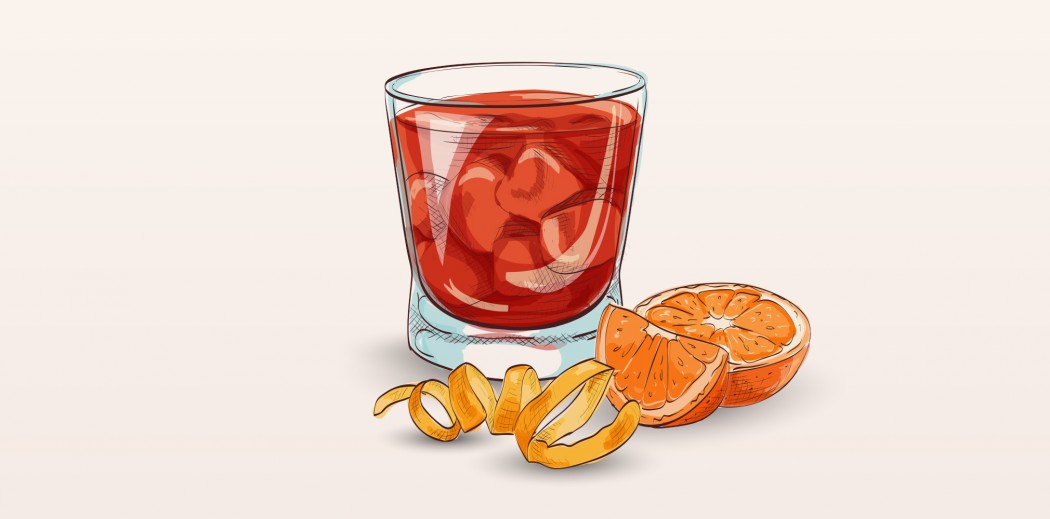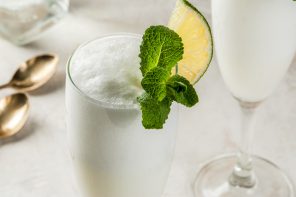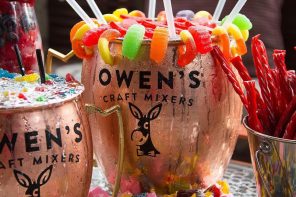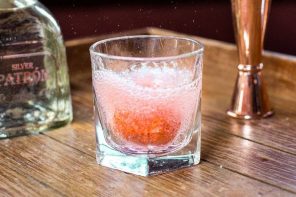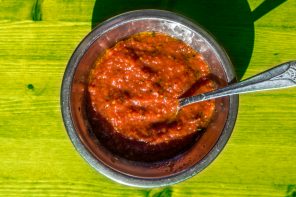Though I’m not a fan of bitter drinks, I’ve always loved the Negroni for it’s vibrant, orangey-red hue. A Negroni is equal parts gin, sweet vermouth, and Campari, garnished with orange peel. Thanks to its simplicity, it’s incredibly easy to make and since it’s all alcohol, go for top-shelf booze. It should be stirred, not shaken (this is not the time for James Bond one-liners), directly over ice in an Old Fashioned glass. This drink gets its color from the Campari, an Italian aperitif that has a citrusy, botanical flavor and slight sweetness.
Many believe that this cocktail is named after Count Camillo Negroni, an Italian who allegedly spent time in the United States pursuing gambler-cowboy pastimes. When he returned to Florence after World War I, he ordered an Americano (made with Campari, sweet vermouth, and club soda) with gin instead of the soda. Because why wouldn’t you mix alcohol with more alcohol? The bartender swapped lemon peel for orange to signify that it was a different drink, beginning a garnish tradition that lives on today.
Thanks to a renewed interest in cocktails other than the Carrie Bradshaw Cosmopolitan, the Negroni seems to be more popular than ever. Numerous cities throughout America have dedicated entire weeks to celebrating this classic cocktail. In Portland, Oregon, you can find everything from a barrel-aged version to a Negroni-inspired ice cream sandwich. If you’re in New York, you can sip on a frozen Negroni on the rooftop at Mario Batali’s Eataly. In Boston, order a sparkling wine Negroni on tap at La Brasa for a bubbly spin.
Regardless of these flashy versions, the Negroni is in many ways an Italian tradition. Italian-born bartended Mauro Mahjoub told Conde Nast Traveler that “Campari plays a big role in Italian culture – it’s like fish-and-chips for the British. Everybody remembers the first time they have Campari. It’s the weirdest thing ever – you kinda love it and kinda hate it at the same time, but it’s so intriguing.” Sums up my first sip to a T.

